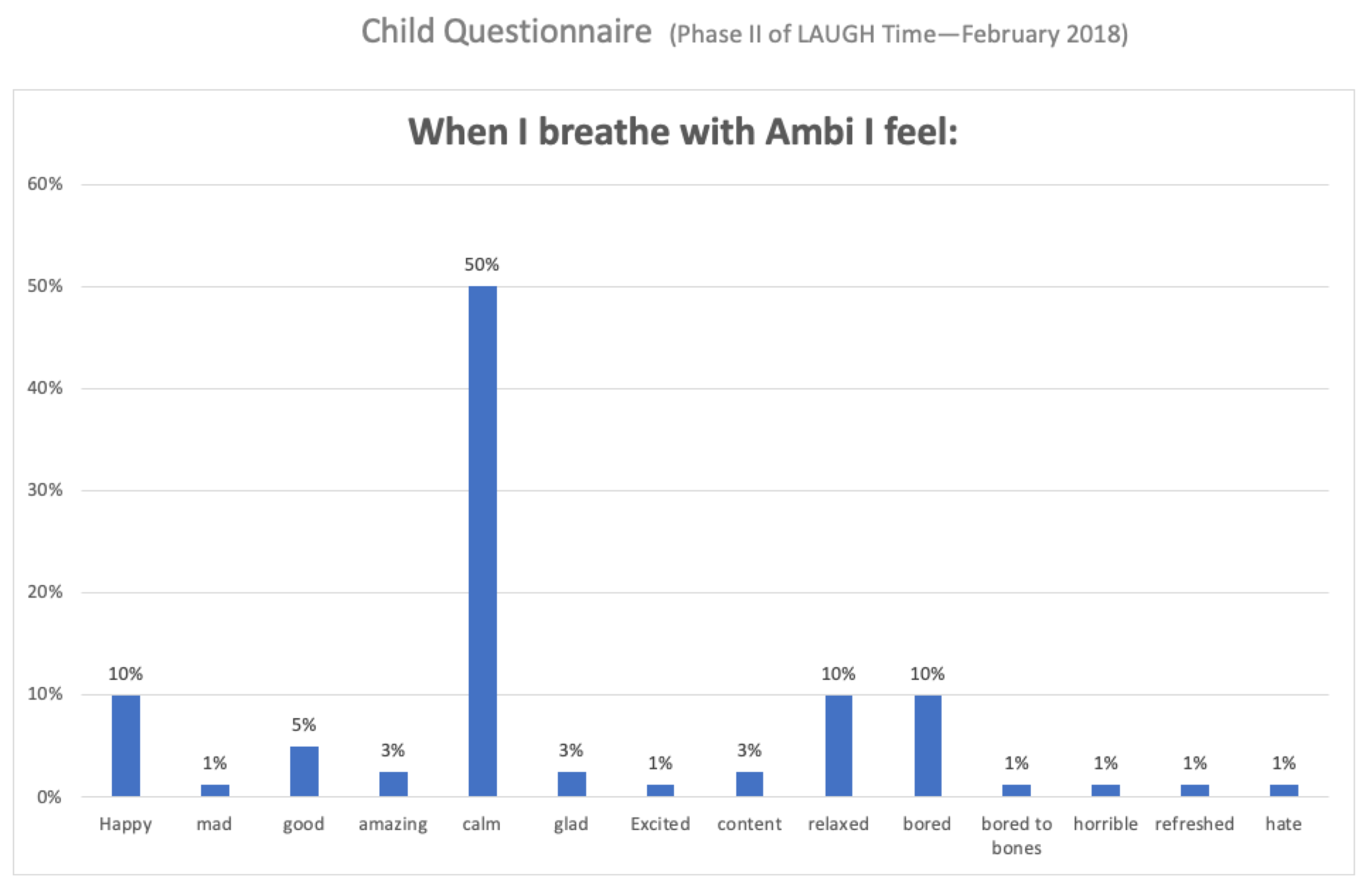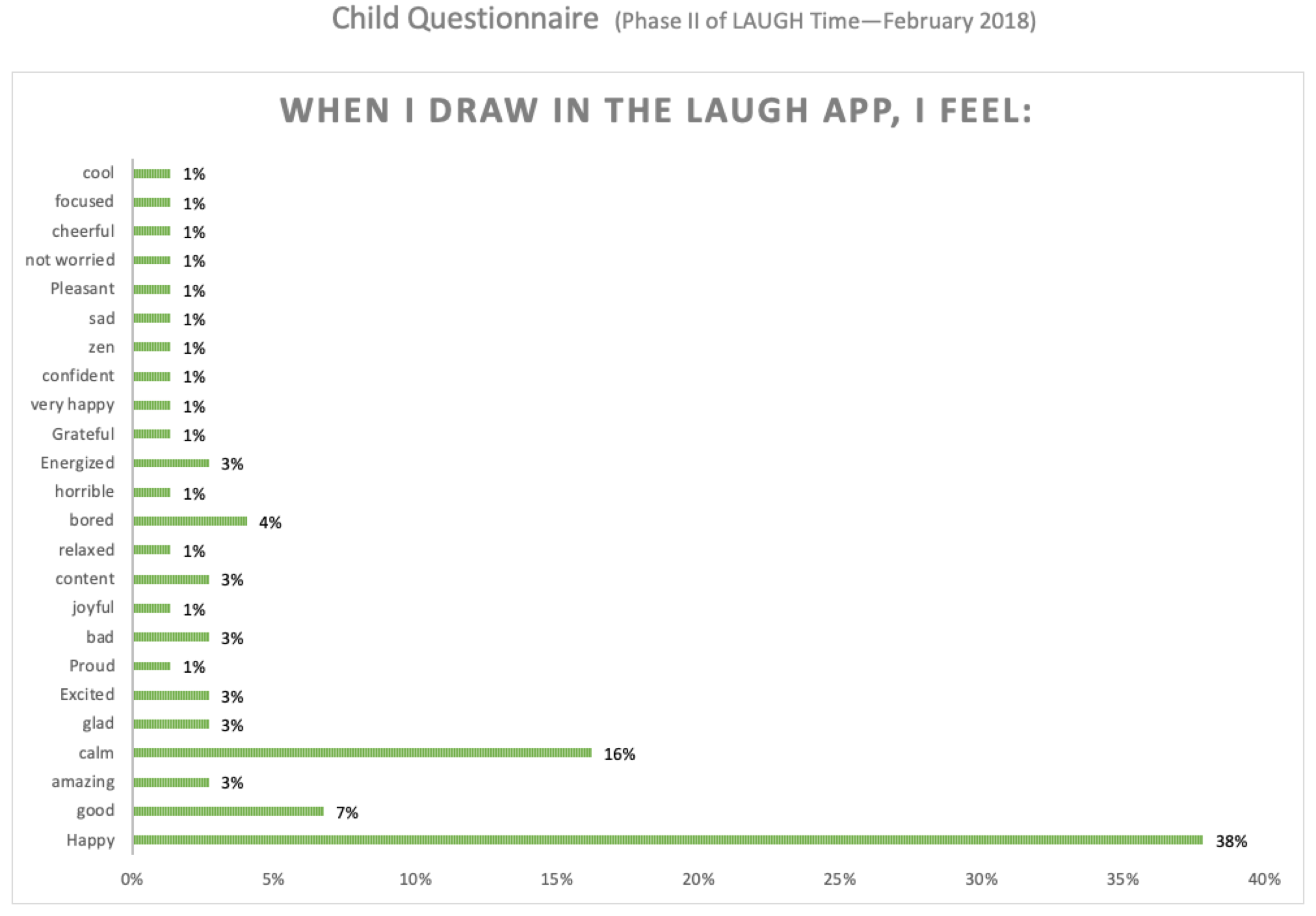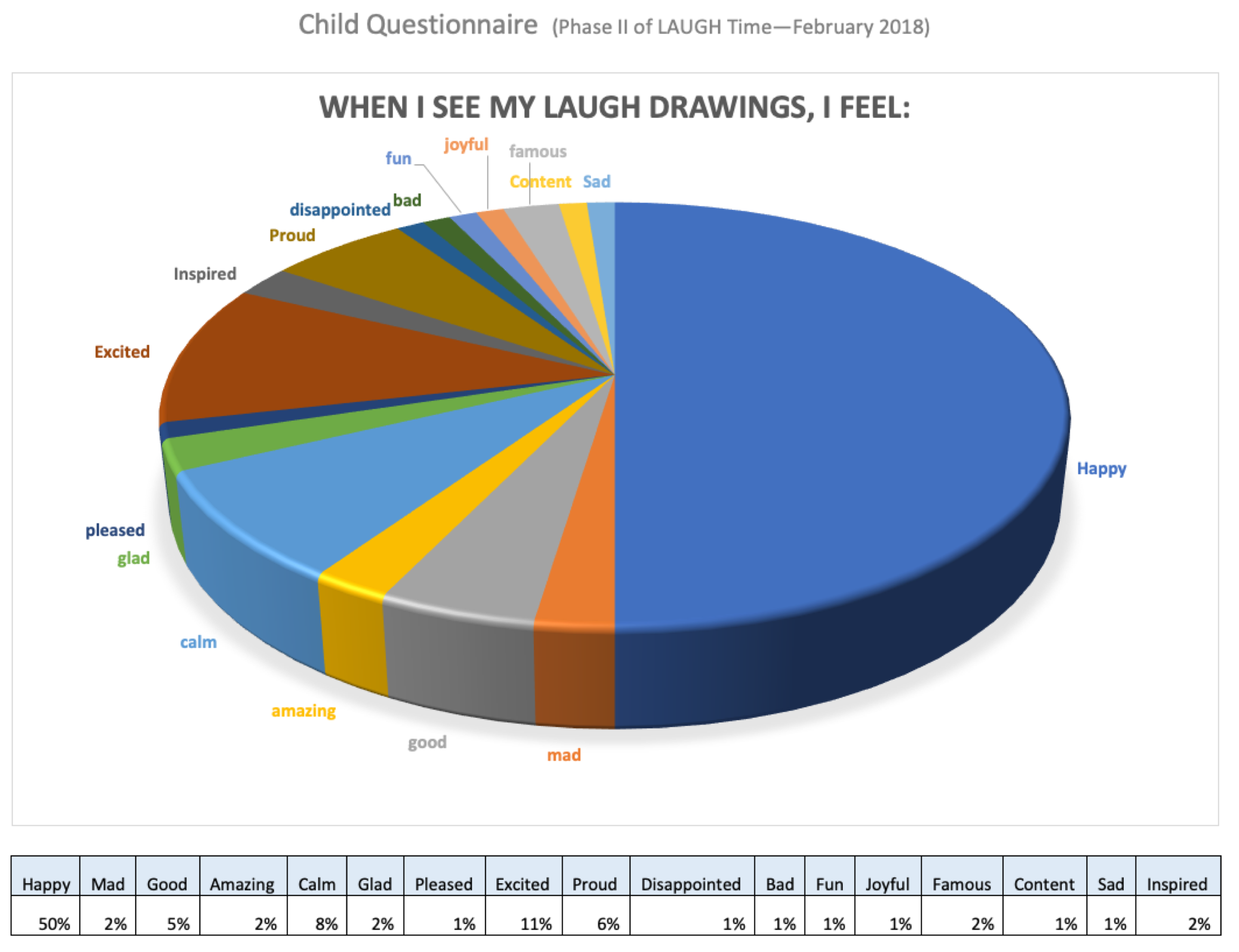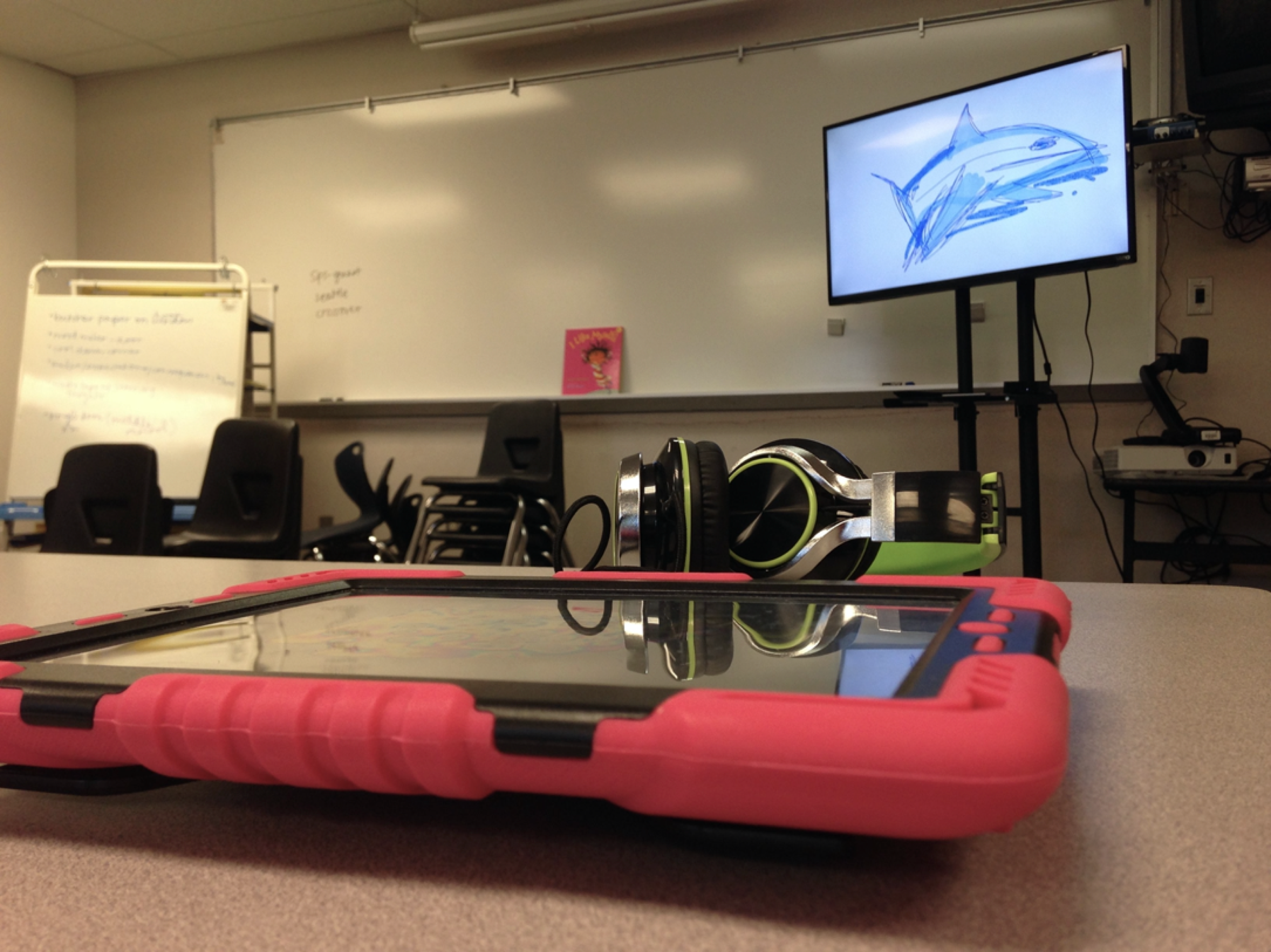
Challenge
Anxiety, depression, aggression, and non-compliant behavior is prevalent in some inner city schools. Could a newly released evidence-based, mindfulness app help decrease these trends and help to increase school engagement, classroom participation, positive social behaviors, and coping skills?
Solution
For the 2018-2019 school year, The Catherine Mayer Foundation, Madrona Elementary School, University of Washington School of Psychology, and UpTop were determined to launch a pilot program to test these theories.

We rearchitected the app’s design to accommodate the newly proposed feature of social sharing and built out the infrastructure at the school to support the pilot program.
Outcomes
- Helping children, both physiologically and psychologically, in their learning environment was the greatest outcome for this project
- Most students completed between 30-50 sessions of L.A.U.G.H.® time and created more than 12,000 works of art in Year 1; During the first 10 weeks of L.A.U.G.H.® time, the average level of student engagement was 95.6%.
- Positive year 1 results led to an expansive year 2 study that drastically scaled the program; Year 2 results were equally positive and talks are on-going with regards to scaling the program district wide.
Role: Strategy, Design Guidance and Support, Infrastructure, Deployment, Technical Support, and Logistics
A Deeper Dive
Project Challenges
Working within the parameters of the Seattle Schools system
Connecting with the right people was difficult to say the least and getting untimely responses were the norm. We faced dead ends and unrealistic timelines from the get go when trying to plan out the hardware and networking requirements to get the program off the ground
Architecting a bespoke experience
Being such a non-traditional project, it took some time to think through the architecture for how this system would be designed and built. There was lots of prototyping and testing to iron out the kinks.
Limitations of TestFlight on Apple’s development platform
The beta testing platform made it extremely difficult to maintain and scale the number of apps that were deployed within the pilot program.
The A-HA Moment!
With little progress being made on the school system front, I jokingly said to our technologist, “Why don’t we just setup our own network?” There was a moment of silence, before it got serious. The technologist and I had a quick conversation and figured that all we needed was to setup mobile hotspots and quickly researched the latest in mesh network technology. Our idea wasn’t tested, but the theory had a high probability of working.
We quickly got on the phone with Catherine who then made a phone call to the principal. She had approved us going around the school system, and now it was on us to make it become a reality.
Program Overview
- Students fill out a mood meter at start of app
- Practice mindful breathing
- Share free form drawings
- Answer survey questions about learning and school
- Fill out mood meter on completion of session
- Students ‘screened’ artwork is displayed on TVs in their learning environment
L.A.U.G.H. TIME Program Details
20minute sessions |
2days / week |
9months |
Year 1
80+students (2nd & 3rd grade) |
4classrooms |
5on-site researchers |
80configured iPads and headphones |
5smart TV displays, mobile stands, and Apple TVs |
1mobile hotspot, including 3 mesh routers |
Year 2
259students (K-5) |
12classrooms |
5on-site researchers |
175configured iPads and headphones |
12smart TV displays, mobile stands, and Apple TVs |
2mobile hotspots, including 7 mesh routers |
How It Works
A companion Admin app was designed and developed to screen and approve the drawings of each student. Researchers were trained to do this on a weekly basis which could be accomplished from an iPad or from a mobile phone.
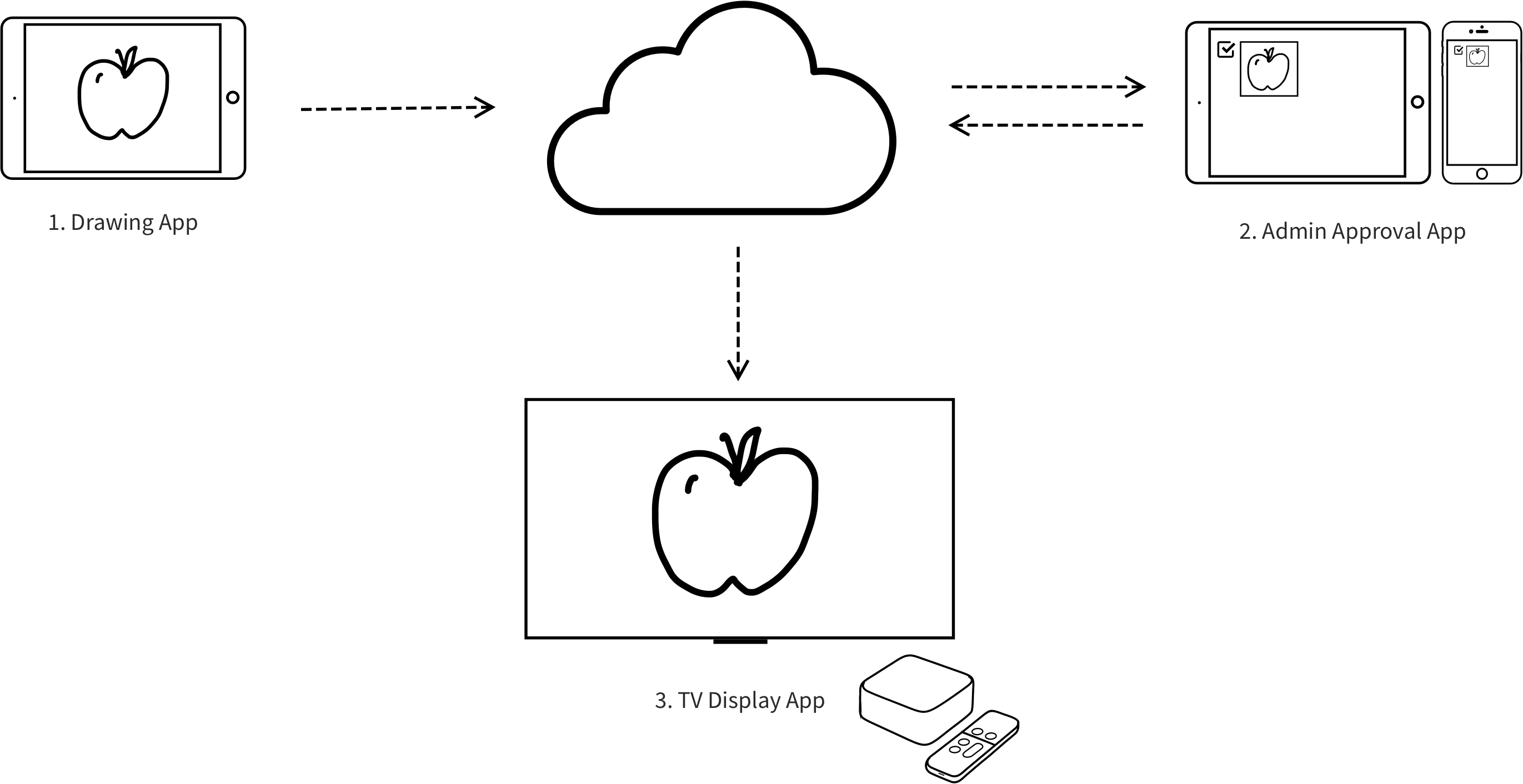
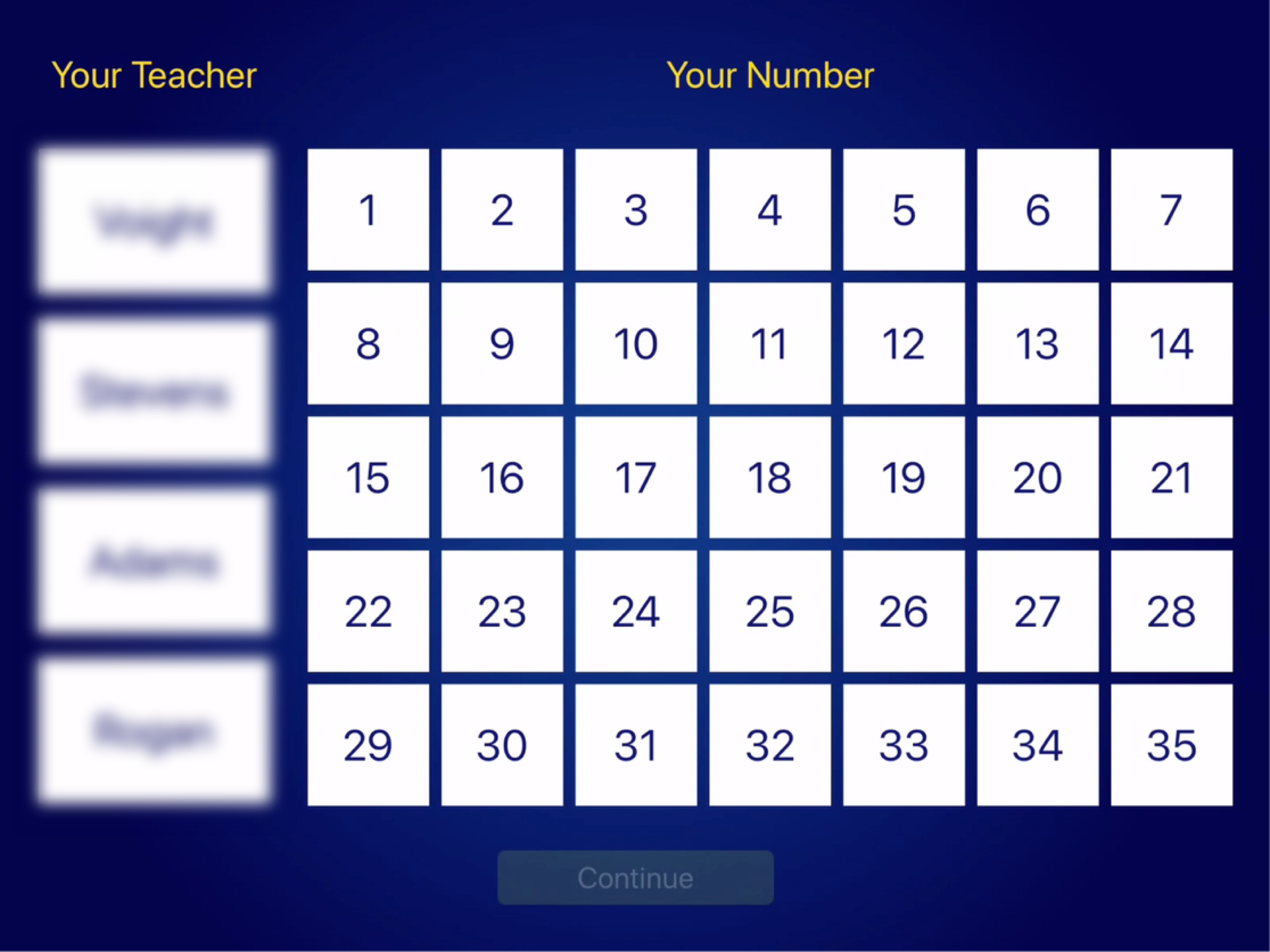
Each kid was prompted to select whom was their teacher and their corresponding ID for using the app
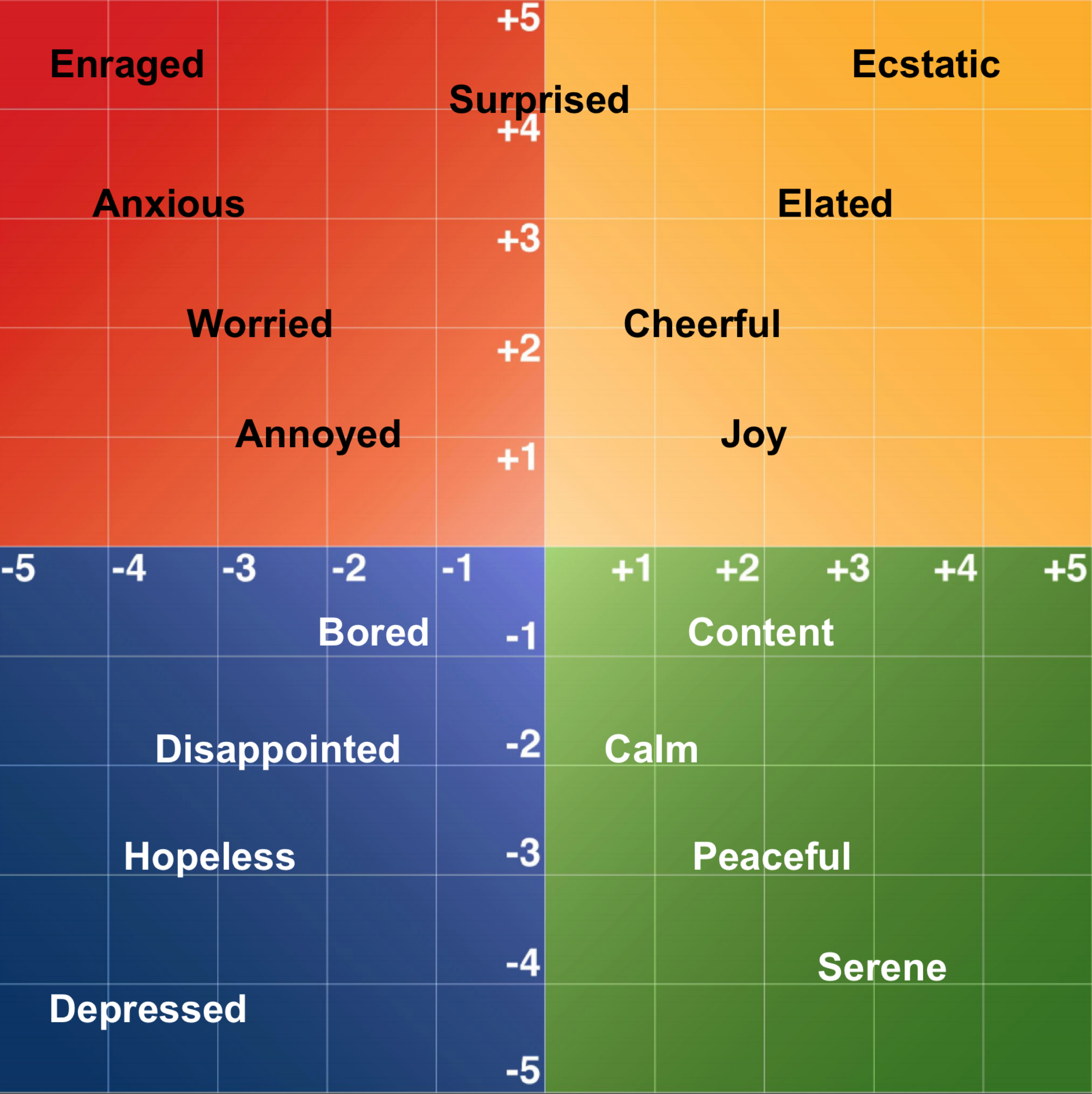
A mood meter, standard in RULER schools, was displayed at the start of the app as well as the end to record their state of mind prior and post use.
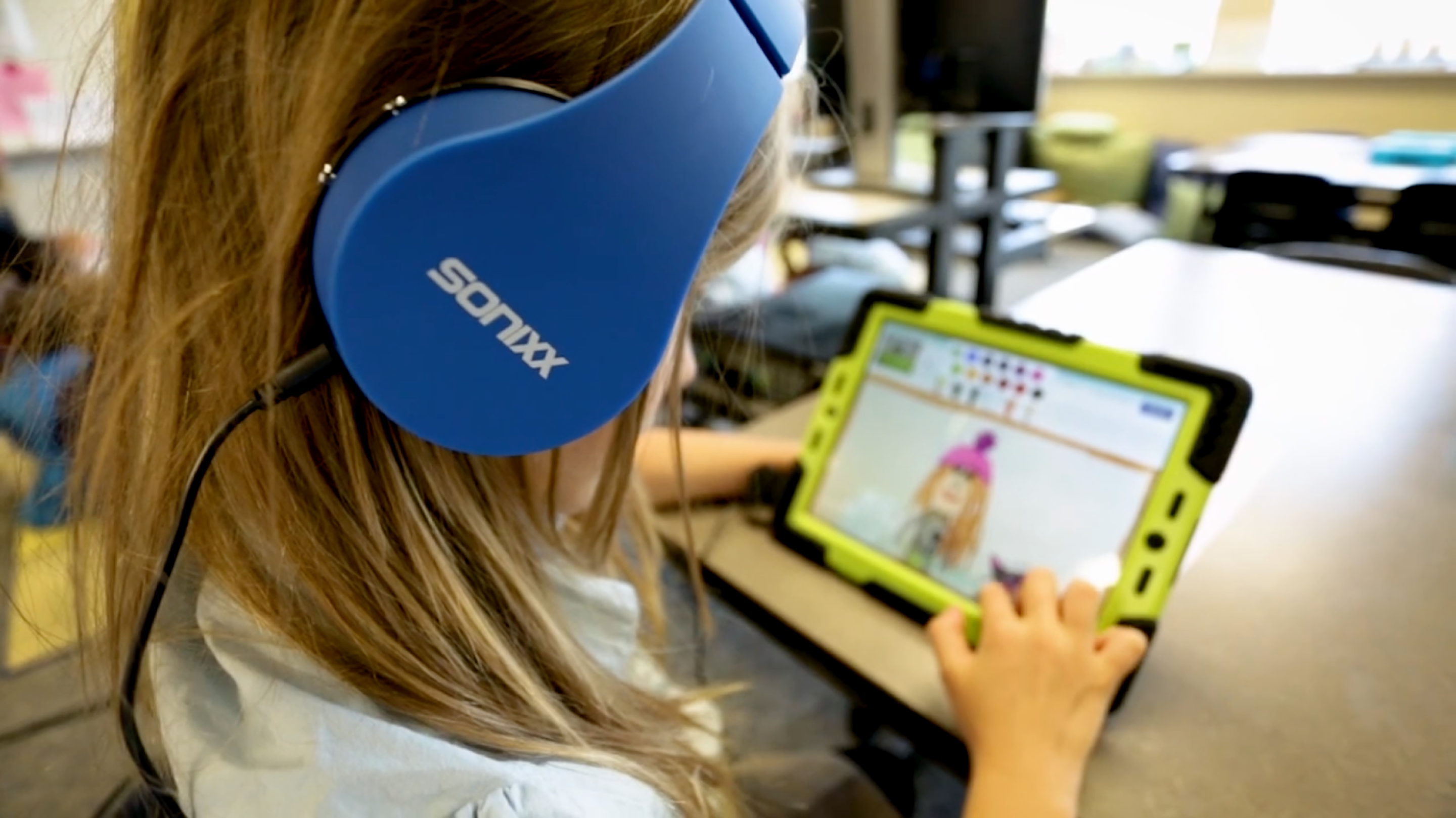
After going through the required breathing exercise, students were entered into Free Draw where they could express their creativity.
“Our mornings run much smoother on LAUGH time. The students respond well to the structured routine and are more engaged than on other days. They also act calmer on those days as a result of LAUGH Time.”
– Unnamed Teacher
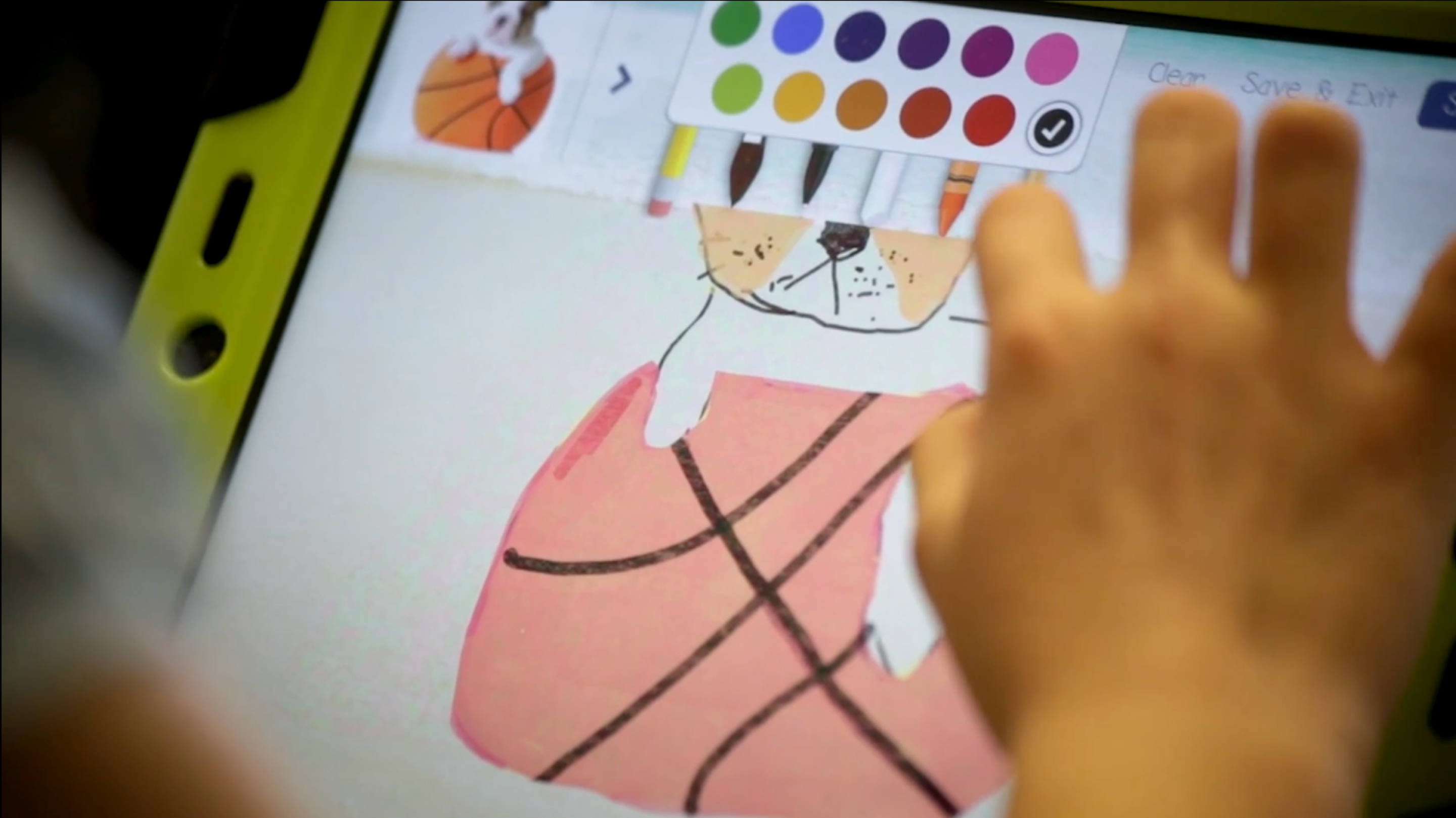
Knowing that their drawings would be seen by all, some would communicate messages to their friends in their drawings.
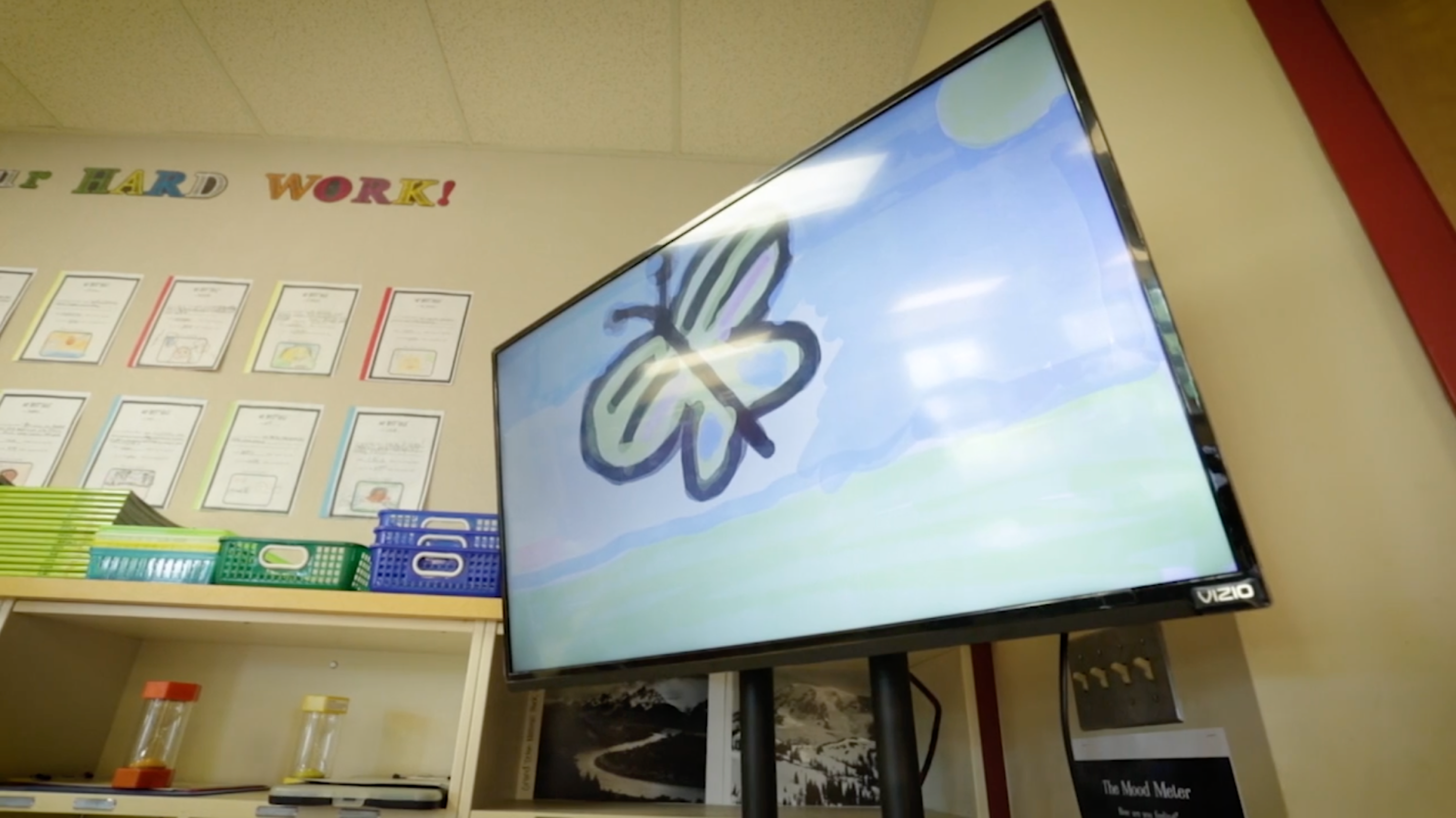
Student drawings were displayed in each classroom as a slideshow along with special curated music for maximum effect. The building-in of line drawings is what sets this apart from static slideshows in that it engages the viewer. Another large display was setup in the Cafeteria for all kids to experience.
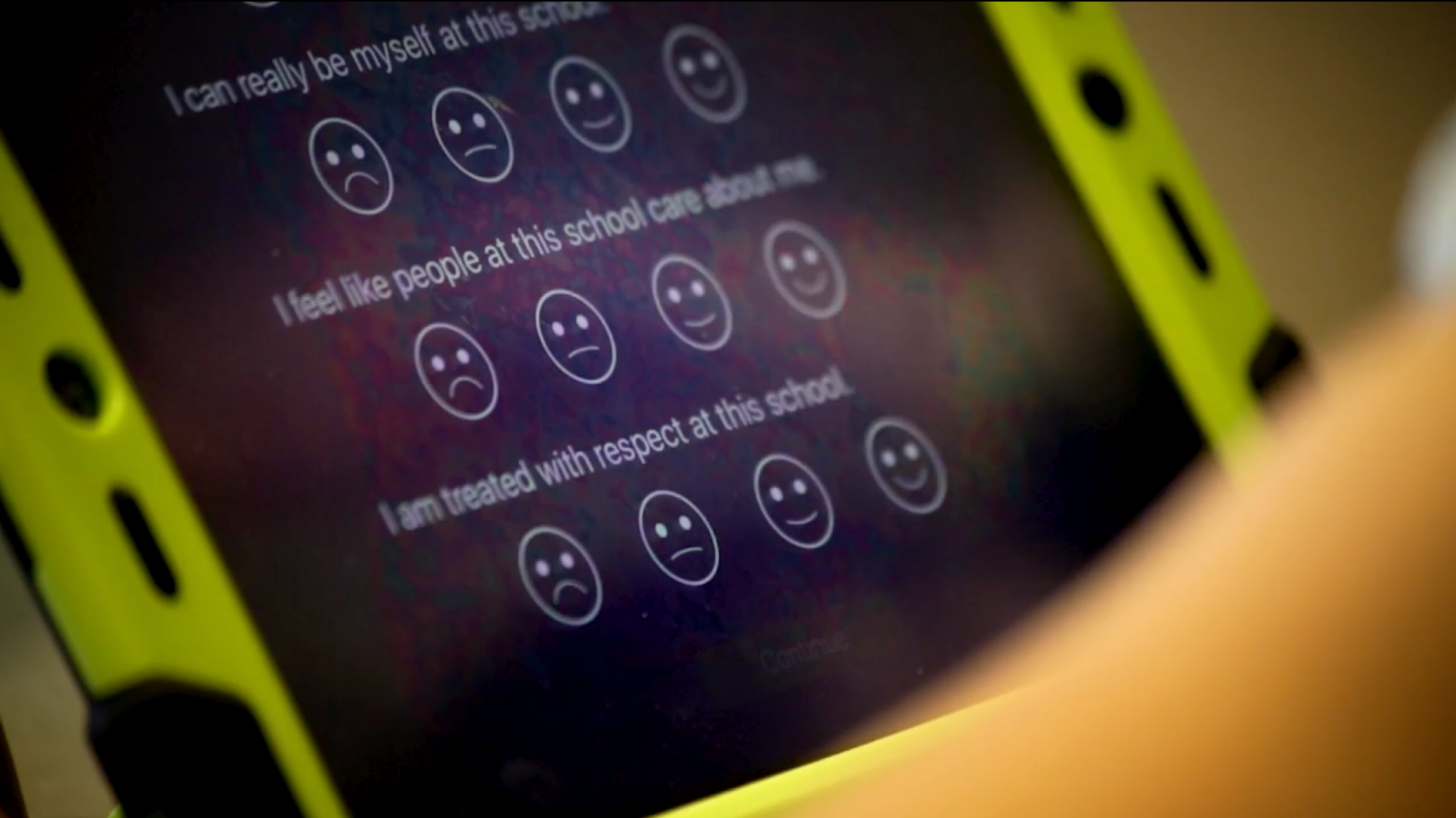
At the end of each session, students were prompted to fill out a standard questionnaire that captured their feelings.
